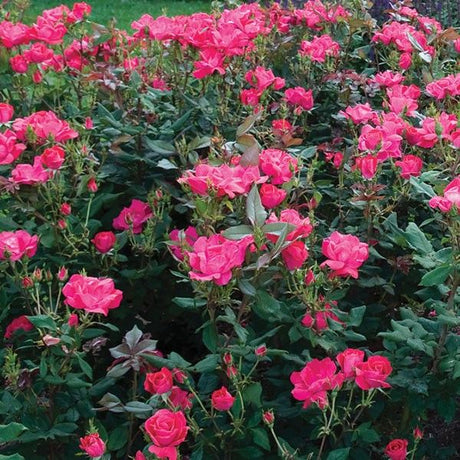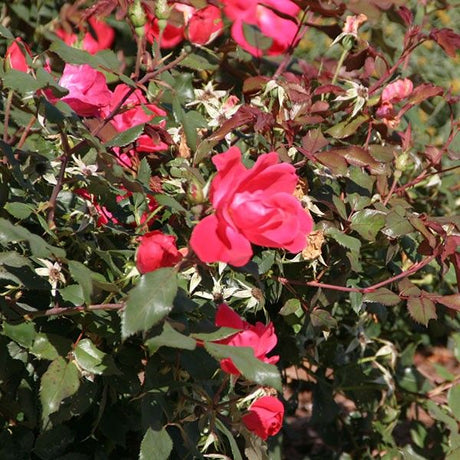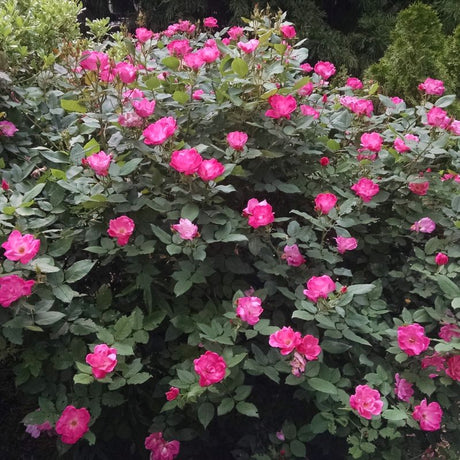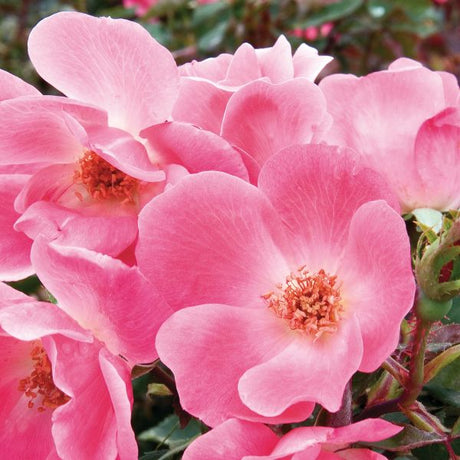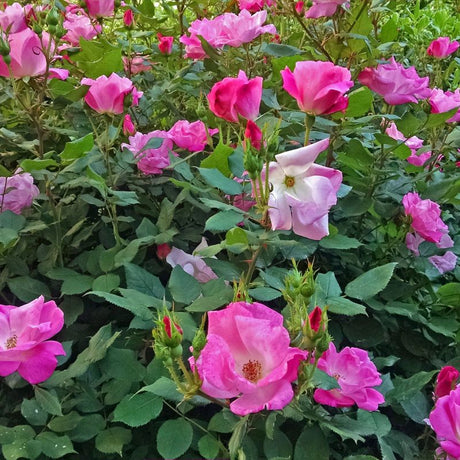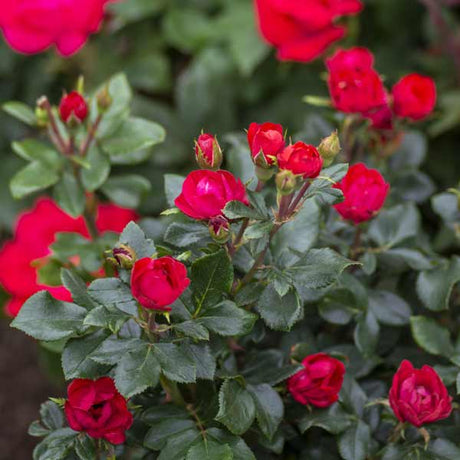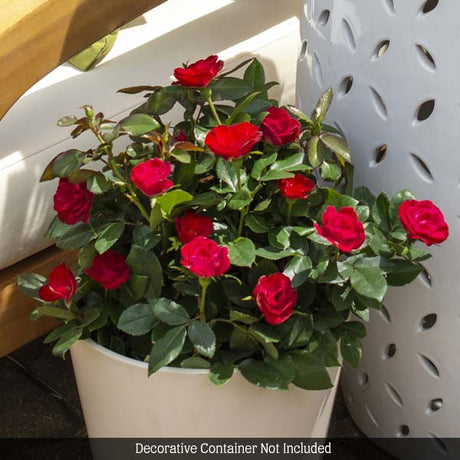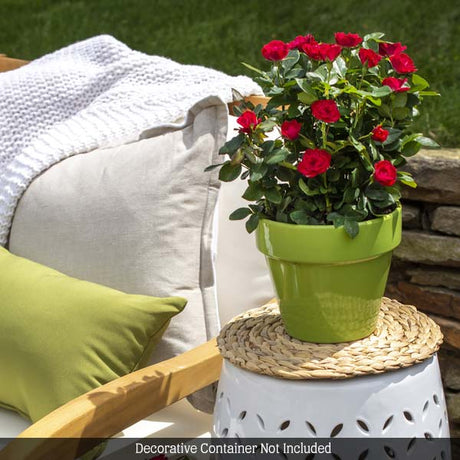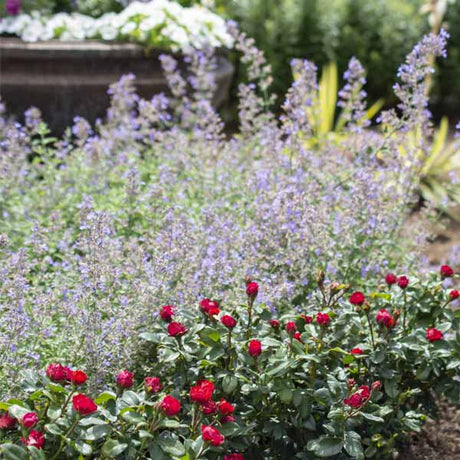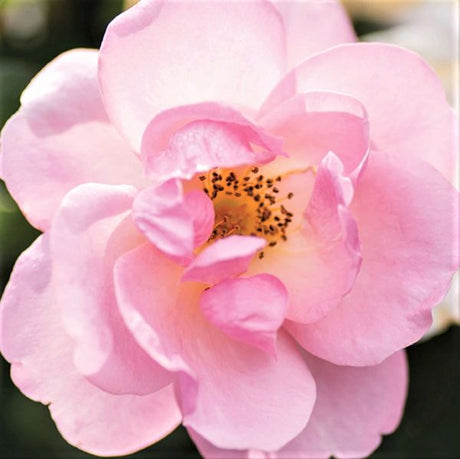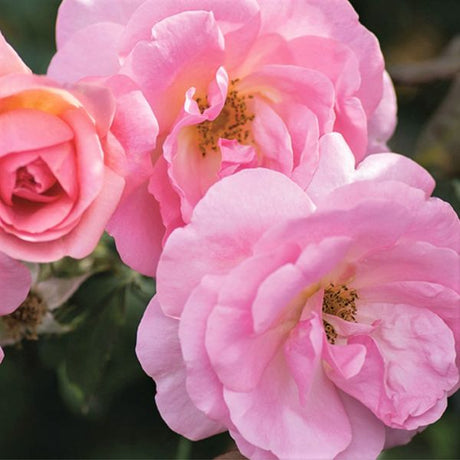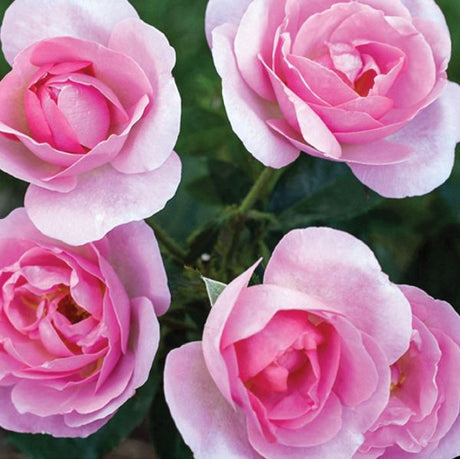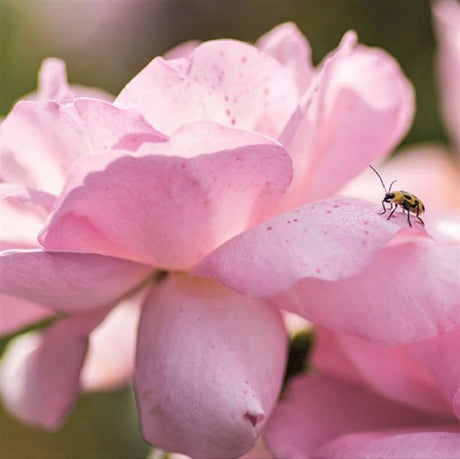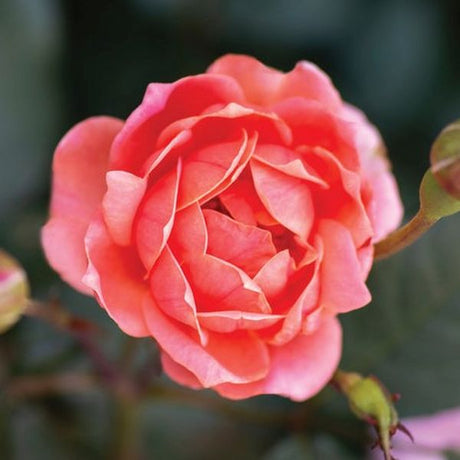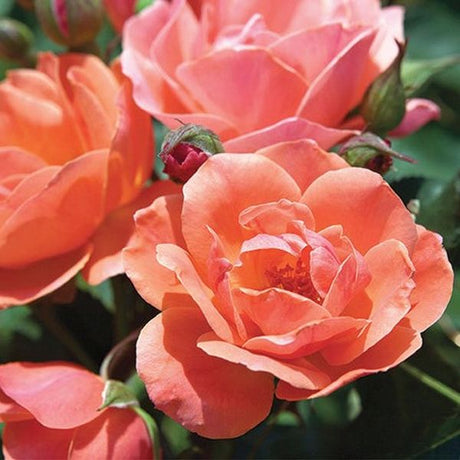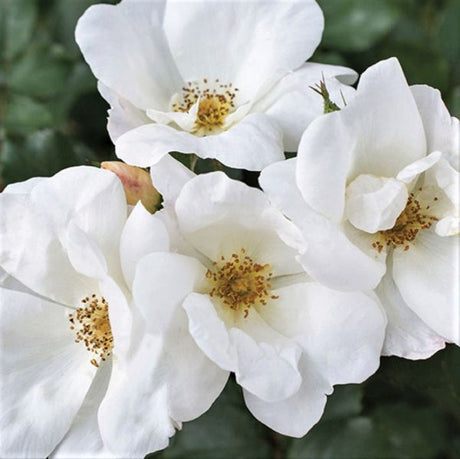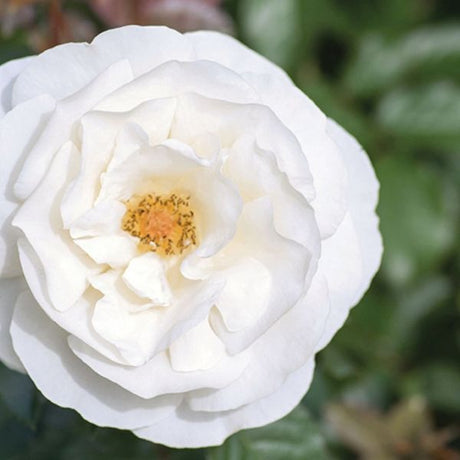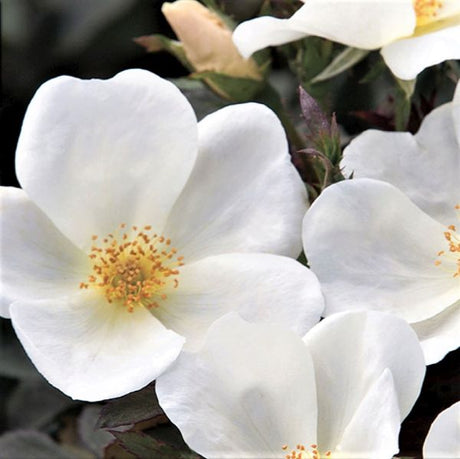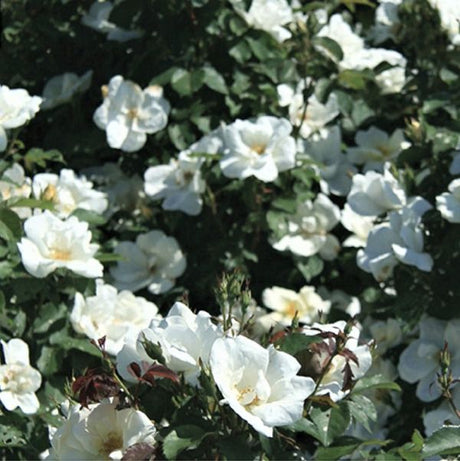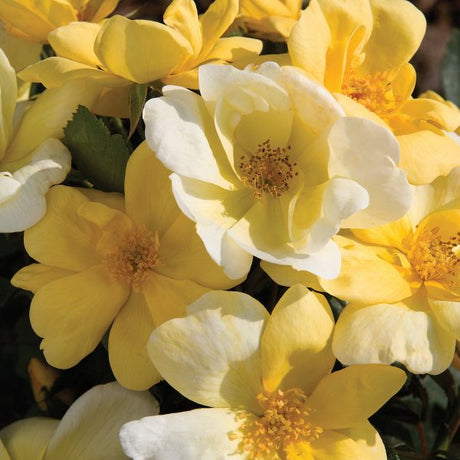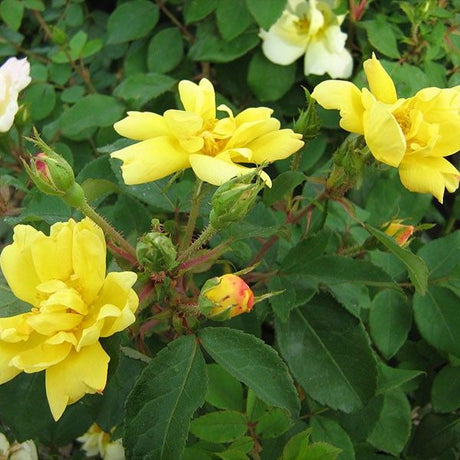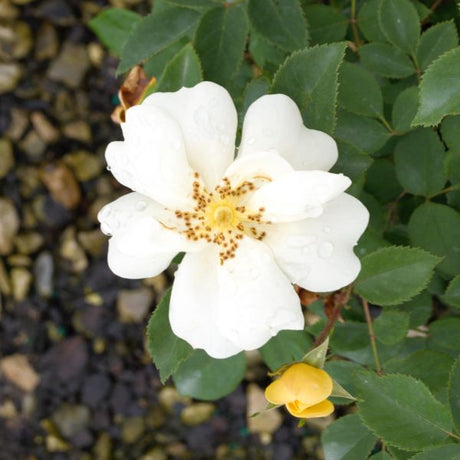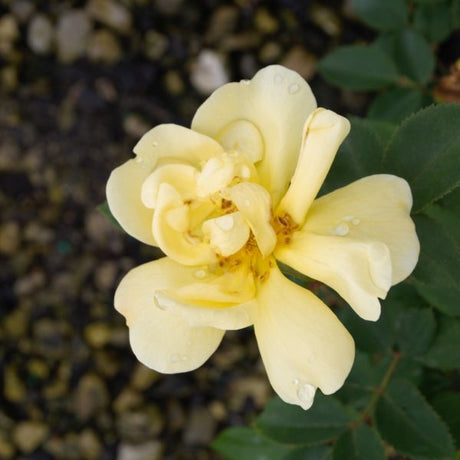-
Knock Out® Orange Glow™ Shrub Rose
Rosa ‘Radslam’ PP35,826
Regular price From $6318Unit price /Unavailable -
Up to 5% off
-
-
-
Knock Out® Easy Bee-zy™ Shrub Rose
Rosa ‘SRPylwko’ PP35,465
Regular price From $6311Unit price /Unavailable -
-
Up to 17% off
Pink Double Knock Out® Shrub Rose
Rosa 'Radtkopink'
Regular price From $5918Unit price /Unavailable -
Sold out10% off
Rosa 'Radral'
Sale price $6867 Regular price $7633Unit price /Unavailable -
Sold out6% off
Rosa 'Radwhite'
Sale price $6867 Regular price $7338Unit price /Unavailable -
Up to 16% off
-
Up to 13% off
-
Up to 10% off
The Knock Out® Family of Roses Collection
It's often thought that the only way to be successful at growing and caring for a rose garden is to be a master gardener with decades of experience. However, this simply isn't the case these days as collections like The Knock Out® Family of Roses offer easier options.
The varieties in this revolutionary brand are easy to grow, absolutely gorgeous and have an affliction for rewarding growers every single day with new blooms from spring until the first frost.
You won't have to worry about living somewhere too warm or too cold as many in the family are both heat tolerant and cold hardy. Pair that with their shrub form and these roses will fit perfectly into your garden regardless of style, climate or size.
It's no secret that this brand, a Star Roses and Plants creation, has some of the most disease-resistant rose varieties on the market. Ideal living conditions will make black spot a thing of the past.
Take a look and discover the newest additions to your garden below!
Using Knock Out Roses in the Garden
From focal point to accent, landscape to container, these shrub roses can do it all, and will with a sense of grace and sophistication only roses can provide.
Try planting in mass on the edges of your garden to create a colorful hedge. You can do this by planting your shrubs about three feet away from each other, measuring from their centers. This gives the visual of a hedge while also providing adequate air circulation.
You can also plant as an accent in your already established garden beds. Sunny Knock Out® Rose blends well with other colors and will send the light scent of citrus through the air!
A bolder statement could be made by adding the original Knock Out® Rose in your front foundation plantings or by the mailbox, for everyone to admire freely.
If you're low on garden space these days, no worry, plant this collection's newest addition, Petite Knock Out® Rose. This hardworking accent takes all of the best qualities of its larger brothers and sisters and fits them into a compact shrub perfect for containers on your back patio!
For a showstopping display, plant a few different varieties together in the landscape and see how the colors mingle and work together. Your garden will be the hottest spot on the block.
Caring for your Knock Out Roses
Like we mentioned earlier, caring for these shrubs is a breeze as long as you follow a short list of instructions.
First, you should pick a spot to plant that gets full sun each day. That means somewhere around 6-8 hours of sunlight per day. You'll also want to make sure you have well-drained soil to promote excellent root health.
If you don't happen to have the soil that drains, you can always create a mound 18 inches above ground level and plant there, or try installing a raised bed. That way, not only can you control the drainage, you can also specially create the soil composition.
Once planted, you'll want to water it in well and continue to do so often until the shrub is established, usually, this will take the first growing season. You can help conserve water and protect the roots by adding a layer of mulch around the base of your plant.
It's important to know when and how to prune to keep your rose bushes healthy year after year. It's not too difficult though, simply grab your favorite pair of shears and cut your shrubs back to about 12 inches in the early spring, before new growth gets fully underway.
If you've been waiting for a sign to try your hand at curating a rose garden of your own, consider this it. Browse from the Knock Out Family of Roses today and order your favorites today!
FAQ's for Buying Knock Out® Roses Online
What makes Knock Out® Roses more popular than traditional hybrid tea or floribunda roses?
What makes Knock Out® Roses more popular than traditional hybrid tea or floribunda roses?
Knock Out® Roses were bred by Bill Radler to solve three pain points that frustrate home gardeners: high disease pressure, limited bloom windows, and demanding maintenance. By crossing repeat‑flowering shrub roses with disease‑tolerant species, the series delivers (1) continuous color from spring to frost, (2) strong resistance to black spot and powdery mildew, and (3) self‑cleaning petals that drop on their own, eliminating tedious deadheading. Because these benefits translate into fewer chemical sprays, less pruning skill, and near‑constant blooms, homeowners perceive a far higher reward‑to‑work ratio than with most classic rose classes—hence the line’s rapid rise in popularity since its 2000 debut.
How much sunlight, water, and soil preparation do Knock Out® Roses need to bloom non‑stop?
How much sunlight, water, and soil preparation do Knock Out® Roses need to bloom non‑stop?
Sunlight: Six or more hours of direct sun powers continuous bud formation; fewer hours reduce bloom count. Soil: Work 2–3 in. of compost into the top 12 in. and ensure pH 6.0 – 6.5 so nutrients stay available. Water: During the first growing season, provide 1 in. of water twice weekly if rainfall is lacking; afterwards, shift to a deep soak whenever the top 2 in. of soil dries. Mulch: A 2‑in. organic layer moderates soil temperature and conserves moisture, reducing stress that can interrupt flowering. Following these steps synchronizes light, nutrition, and moisture—the three inputs roses convert into continuous bloom flushes—so Knock Out® plants can deliver their trademark color show.
When and how should I prune Knock Out® Roses to control size without sacrificing flowers?
When and how should I prune Knock Out® Roses to control size without sacrificing flowers?
Knock Out® shrubs bloom on new wood. Timing: Prune in late winter or very early spring, just as buds swell, to avoid removing future flower wood. Method: Cut stems back to 12–18 in. above ground, angling just above an outward‑facing bud; thinning the center by removing a few of the oldest canes improves airflow. Summer touch‑ups: Lightly shear after each major flush if a tighter form is desired; because the shrubs are self‑cleaning, deadheading is optional but a quick shear can prompt even faster rebloom. This cycle—hard rejuvenation once a year plus optional light shaping—keeps plants under 4 ft tall while preserving their season‑long color.
Are Knock Out® Roses really disease‑resistant, and do I still need to spray or monitor for pests?
Are Knock Out® Roses really disease‑resistant, and do I still need to spray or monitor for pests?
The series shows genetic resistance—meaning foliage chemistry and leaf thickness inhibit black spot and powdery mildew spores from germinating. University trials report 80–90 % lower infection rates versus hybrid teas, so routine fungicide sprays become optional rather than mandatory. However, no rose is immune to all problems: Japanese beetles, aphids, or severe humidity can still cause issues. Adopt an integrated approach—spot‑check weekly, hand‑pick pests early, and only apply targeted organics (e.g., neem) if thresholds are exceeded. This balanced strategy leverages the cultivar’s innate resistance while avoiding unnecessary chemical inputs.
How hardy are Knock Out® Roses in winter, and what steps protect them in colder zones?
How hardy are Knock Out® Roses in winter, and what steps protect them in colder zones?
Knock Out® cultivars are reliably hardy to USDA Zone 5 and root‑hardy (die‑back shrub form) into Zone 4 with protection. Before first frost: Stop nitrogen fertilizer by mid‑August to encourage dormancy. After hard frost: Mound 4–6 in. of compost or leaf mold over the crown, then apply a 2‑in. mulch blanket to insulate roots. In early spring: Remove excess mulch to 2 in., then prune away any winter‑killed tips. By focusing on gradual hardening, crown insulation, and spring cleanup, gardeners north of Chicago or Boston can enjoy vigorous regrowth and spring blooms year after year.





